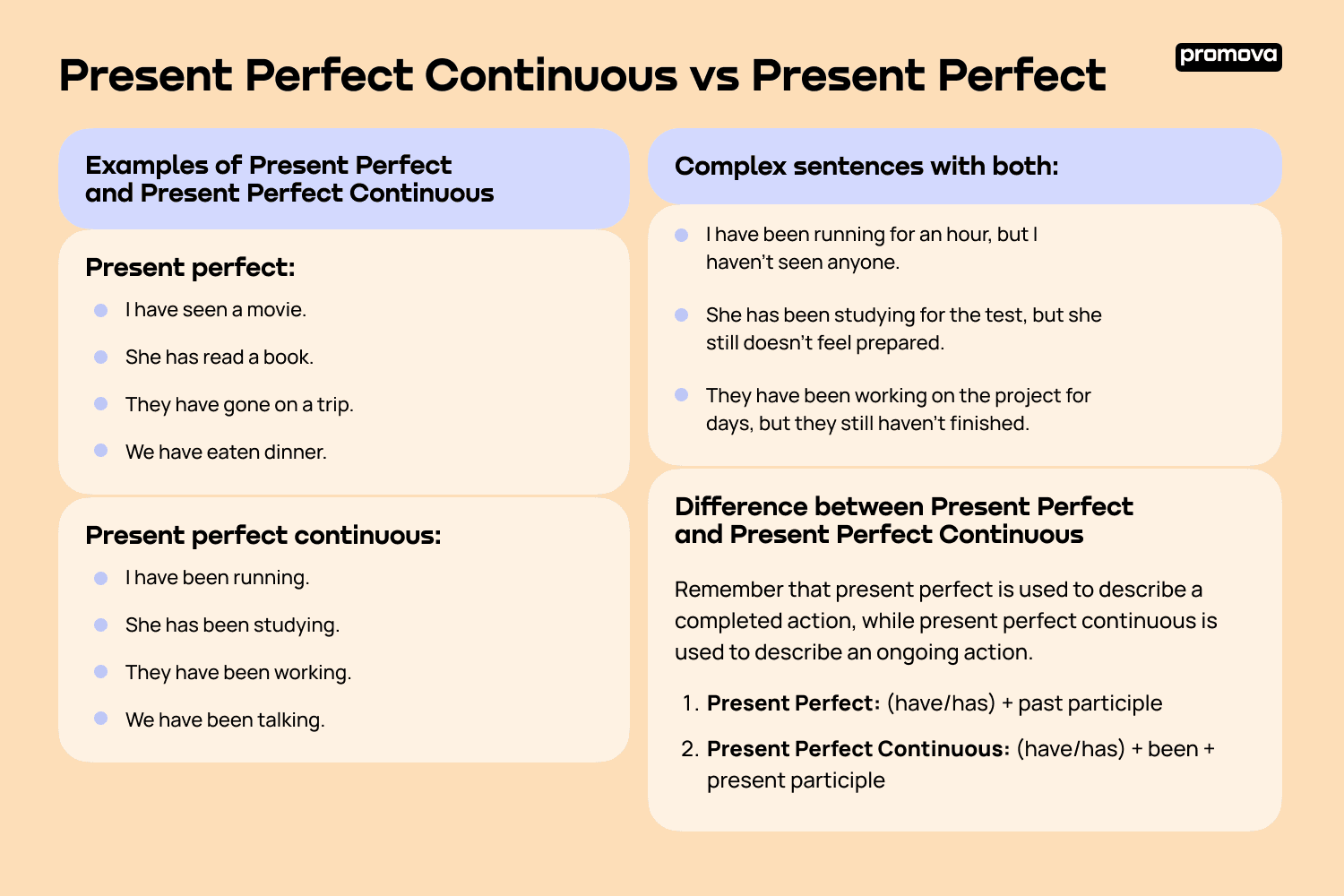Present Perfect Continuous vs Present Perfect
Contents
In this reference, we’ll discuss the present perfect continuous and the present perfect differences to help you understand when to use each of them. Let's start learning!
What is Present Perfect?
Present perfect is a verb tense used to express actions that have recently happened or are still happening. It is used to describe an action that just happened or is still in progress. The present perfect tense is created with the auxiliary verb “have” or “has”, followed by a past participle.
For example, if you wanted to say “I have seen a movie” in the present perfect tense, you would say “I have seen a movie.” This is because the auxiliary verb “have” is used to express the present perfect tense, and the past participle “seen” is used to show the action of seeing a movie.
The present perfect tense also helps express something which started in the past but is still ongoing in the present. For example, if you wanted to say “I have lived in this city for five years” in the present perfect tense, you would say “I have lived in this city for five years.” This is because the auxiliary verb “have” is used to express the present perfect tense, and the past participle “lived” is used to show the action of living in this city.
What is Present Perfect Continuous?
Present perfect continuous is a verb tense used to express actions that have been happening for a certain period of time. It is formed with the auxiliary verb “have” or “has”, followed by the present participle “been” and then the present participle of the verb.
For example, if you wanted to say “I have been running” in the present perfect continuous tense, you would say “I have been running.” This is because the auxiliary verb “have” is used to express the present perfect continuous tense, and the present participle “been” is used to show that the action of running is still happening.
The present perfect continuous tense is also used to express an action that started in the past and is still happening in the present. For example, if you wanted to say “I have been living in this city for five years” in the present perfect continuous tense, you would say “I have been living in this city for five years.” This is because the auxiliary verb “have” is used to express the present perfect continuous tense, and the present participle “been” is used to show that the action of living in this city is still happening.
1
Difference between Present Perfect and Present Perfect Continuous
Now that we’ve discussed what each tense is, let’s look at the differences between them. Remember that present perfect is used to describe a completed action, while present perfect continuous is used to describe an ongoing action.
Here are the formulas for both tenses:
- Present Perfect: (have/has) + past participle
- Present Perfect Continuous: (have/has) + been + present participle
As you can see, the main difference is that present perfect continuous includes the auxiliary verb “been”, which indicates that the action is still happening.
Examples of Present Perfect and Present Perfect Continuous
Let's look at some examples!
Present perfect:
- I have seen a movie.
- She has read a book.
- They have gone on a trip.
- We have eaten dinner.
Present perfect continuous:
- I have been running.
- She has been studying.
- They have been working.
- We have been talking.
Complex sentences with both:
- I have been running for an hour, but I haven't seen anyone.
- She has been studying for the test, but she still doesn't feel prepared.
- They have been working on the project for days, but they still haven't finished.
- We have been talking about our plans for the weekend, but we haven't made any decisions yet.

Summary
Using present perfect and present perfect continuous correctly can be advantageous in many ways, so knowing their differences is very helpful if you want to sound natural. Remember to always use the auxiliary verb “have” or “has” when forming the present perfect tense, and always use the present participle “been” when forming the present perfect continuous tense. Once you get that, you should have no further issues using these tenses in your English!
Comments